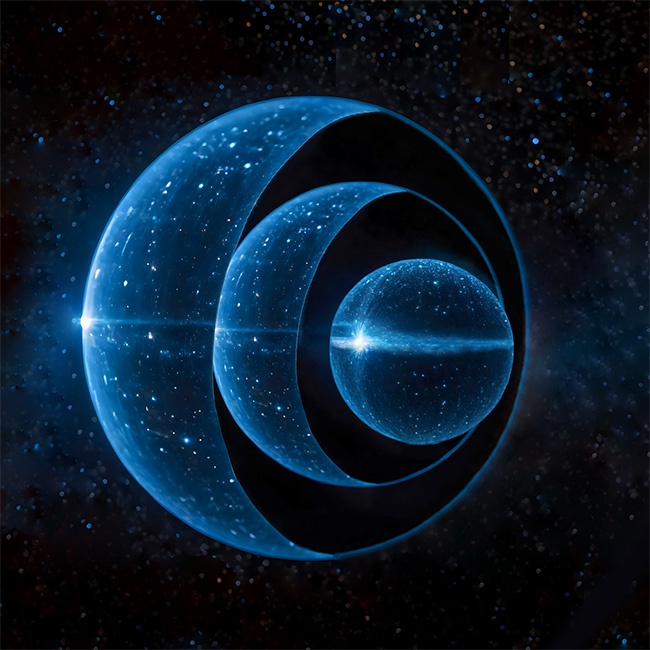One of the central predictions of general relativity is that in the end, gravity wins. Stars will fuse hydrogen into new elements to fight gravity and can oppose it for a time. Electrons and neutrons exert pressure to counter gravity, but their stability against that constant pull limits the amount of mass a white dwarf or neutron star can have. All of this can be countered by gathering more mass together. Beyond about 3 solar masses, give or take, gravity will overpower all other forces and collapse the mass into a black hole.
While black holes have a great deal of theoretical and observational evidence to prove their existence, the theory of black holes is not without issue. For one, general relativity predicts that the mass compresses to an infinitely dense singularity where the laws of physics break down. This singularity is shrouded by an event horizon, which serves as a point of no return for anything devoured by the black hole. Both of these are problematic, so there has been a long history of trying to find some alternative. Some mechanism that prevents singularities and event horizons from forming.
One alternative is a gravitational vacuum star or gravitational condensate star, commonly called a gravastar. It was first proposed in 2001, and takes advantage of the fact that most of the energy in the universe is not regular matter or even dark matter, but dark energy. Dark energy drives cosmic expansion, so perhaps it could oppose gravitational collapse in high densities.
 Illustration of a hypothetical gravastar. Credit: Daniel Jampolski and Luciano Rezzolla, Goethe University Frankfurt
Illustration of a hypothetical gravastar. Credit: Daniel Jampolski and Luciano Rezzolla, Goethe University Frankfurt
The original gravastar model proposed a kind of Bose-Einstein condensate of dark energy surrounded by a thin shell of regular matter. The internal condensate ensures that the gravastar has no singularity, while the dense shell of matter ensures that the gravastar appears similar to a black hole from the outside. Interesting idea, but there are two central problems. One is that the shell is unstable, particularly if the gravastar is rotating. There are ways to tweak things just so to make it stable, but such ideal conditions aren’t likely to occur in nature. The second problem is that gravitational wave observations of large body mergers confirm the standard black hole model. But a new gravastar model might solve some of those problems.
The new model essentially nests multiple gravastars together, somewhat like those nested Matryoshka dolls. Rather than a single shell enclosing exotic dark energy, the model has a layers of nested shells with dark energy between the layers. The authors refer to this model as a nestar, or nested gravastar. This alternative model makes the gravastar more stable, since the tension of dark energy is better balanced by the weight of the shells. The interior structure of the nestar also means that the gravitational waves of a nestar and black hole are more similar, meaning that technically their existence can’t be ruled out.
That said, even the authors note that there is no likely scenario that could produce nestars. They likely don’t exist, and it’s almost certain that what we observe as black holes are true black holes. But studies such as this one are great for testing the limits of general relativity. They help us understand what is possible within the framework of the theory, which in turn helps us better understand gravitational physics.
Reference: Jampolski, Daniel and Rezzolla, Luciano. “Nested solutions of gravitational condensate stars.” Classical and Quantum Gravity 41 (2024): 065014.

